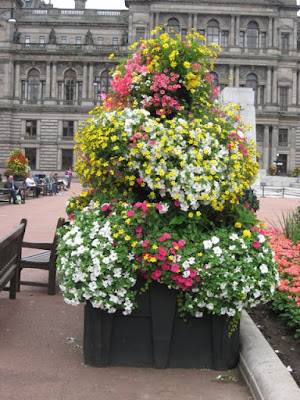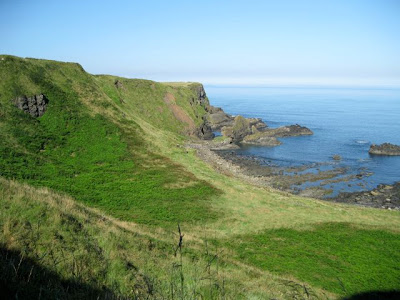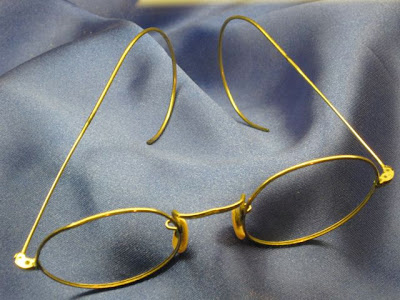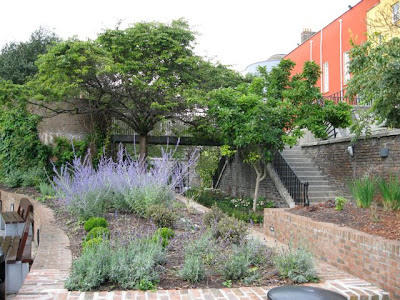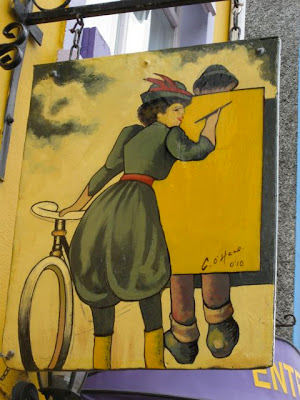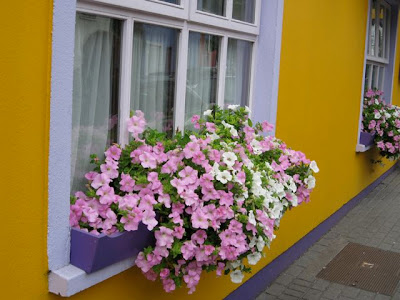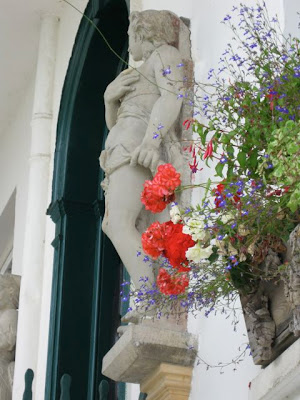


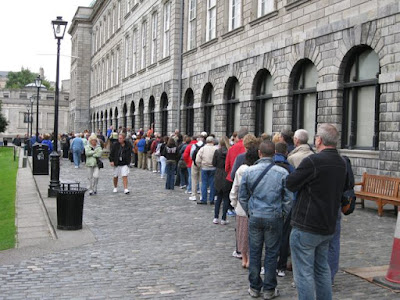

Our next stop was Dublin, home of Trinity College and the largest collection of books in the world, including the enchanting Book of Kells. Trinity College Library houses over four million volumes, collected since the end of the 16th century. It was certainly going to be a book lovers day, to be sure, overwhelming and inspiring at the same time. So let's begin.
We took a shuttle bus into the city, as we had decided to do Dublin on our own instead of with the group. As you draw closer to the main part of town, the magnificent Samuel Beckett bridge greets you, spanning the Liffey River. Designed by architect Santiago Calartrava, the cable-stayed structure resembles a giant harp on its side. It appears to be weightless, a stunning contrast to the surrounding buildings, typical Dublin skies and dark water below. Lucky for us that the timing of this trip made it possible to see, as the bridge was only installed in late 2009.
Dublin is all about the book. Our first stop was Trinity College, where we joined the long line waiting to view the Book of Kells. We had last visited Dublin about 30 years ago; at that time, the Book of Kells occupied one modest glass case inside the Long Hall Library. Today, there are several rooms and a wonderful exhibit that accompany the display of the Book of Kells, located on the level below the Long Hall. Before you view the actual Book folios, there is an exhibit that explains the history, the production (thought to be done by a team of four monks), the techniques, tools and materials, all fascinating details to those of us interested in making books. Examples of Ethopian bindings, many with their own box-like leather carrying cases are included in the exhibit, and don't be surprised if some of next summer's workshop projects are inspired by what I saw here.
Alas, no photos were allowed inside, so you'll have to do a little online surfing of your own to see photos of the magnificent pages. They are incredibly colorful, almost contemporary in appearance; just imagine this intricate work being done with a tiny fraction of the tools and resources we have available today.
After the Book of Kells exhibit, we took the stairs up to the Long Hall, a library so over the top that you must take a deep breath when you enter and just take it all in before you proceed. Picture two very tall stories of floor to ceiling books for more than the entire length of a city block, with an even taller arched ceiling joining the two sides. The length is broken down into nooks, each with its own ladder to reach the upper shelves, and on both floors. It is more books than I have ever seen in one fell swoop, enough to make a book lover swoon.
The walls between the nooks each have a bust of a literati. Many volumes, due to age or condition, appear to have pages and covers tied together with a length of linen tape; you can see these bundles on the shelves in the photograph reproduced above. And then there is that wonderful library book smell that fills the hall. I'm pretty sure this must be what heaven is like.
After our visit, we walked around the Trinity College campus for awhile, noting that even the statues here are all holding books. It was a lovely morning, and in the afternoon we had another book related adventure which I'll share in the second part of this post.






